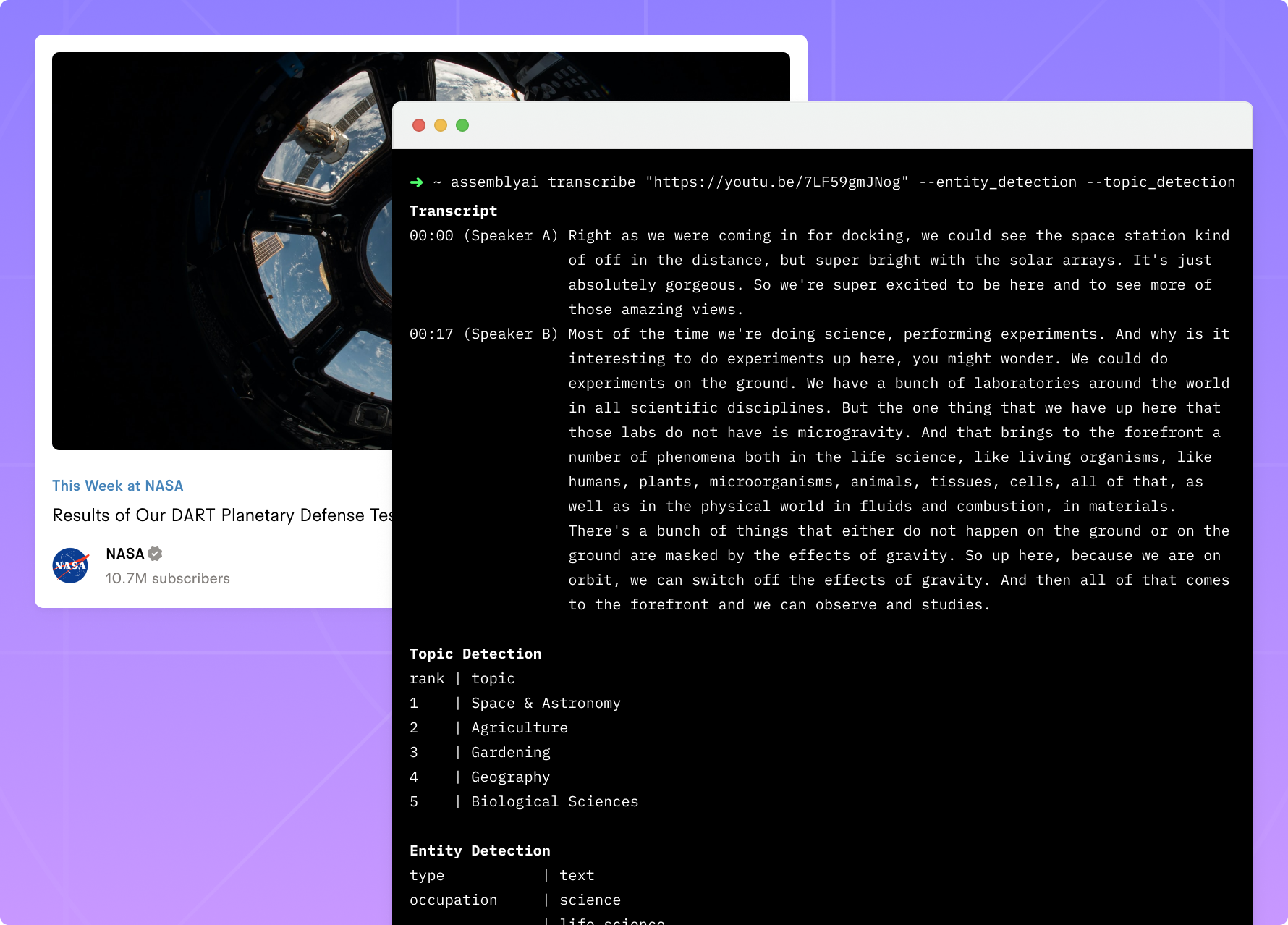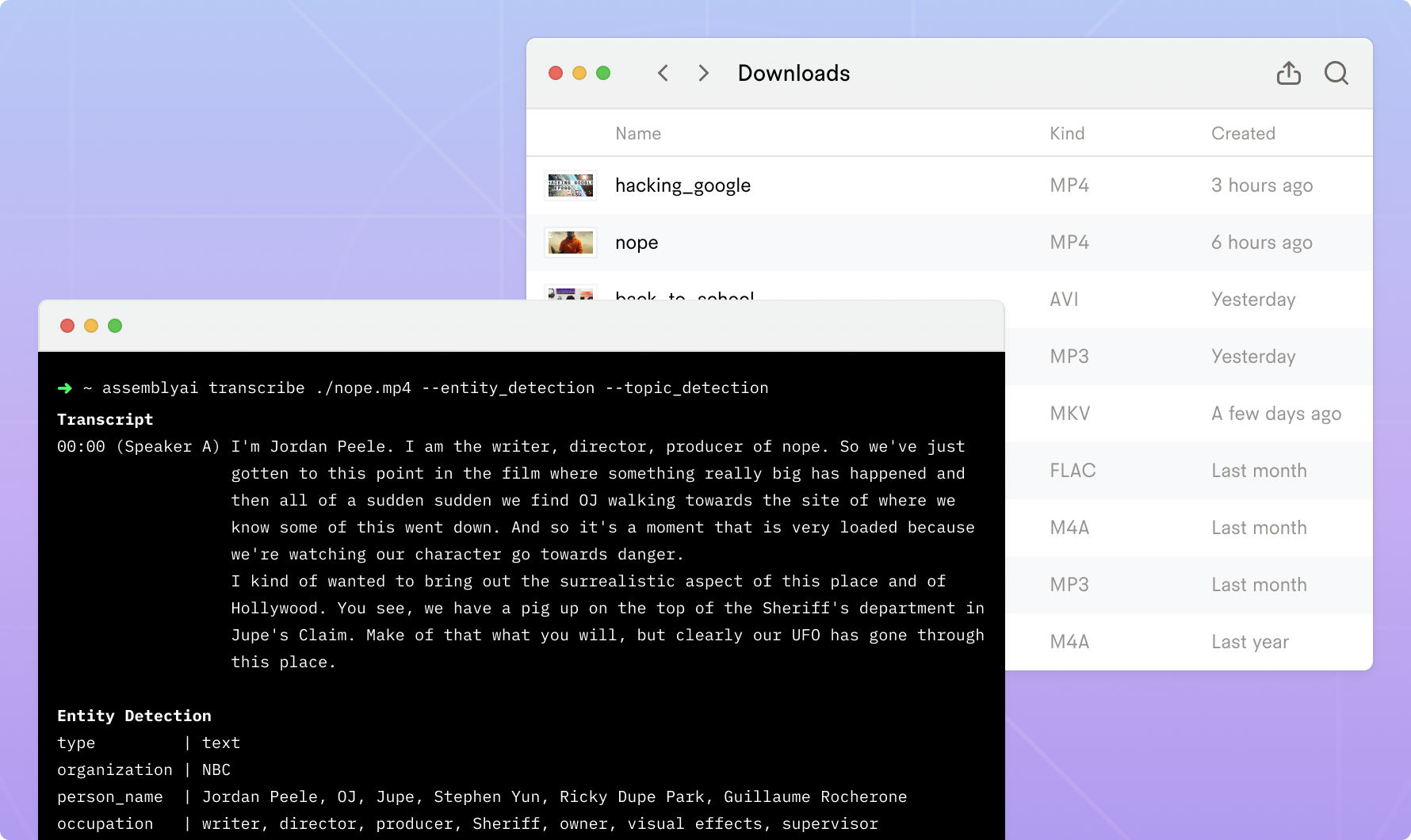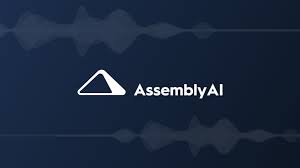Our mission
At AssemblyAI, our mission is to build state-of-the-art AI models and to make them easily accessible to developers and product teams.
To make it even easier to play with our models and APIs, we’re excited to announce the new AssemblyAI CLI. The CLI is extremely simple to install, supports a wide range of operating systems like macOS, Windows, and Linux, and makes it more seamless to experiment with AssemblyAI’s models.


Installing the CLI
If you’re on macOS, you can install it using brew:
brew tap assemblyai/assemblyai
brew install assemblyaiIf you’re running Linux, or don’t have brew installed on your Mac, you can install the CLI by running:
/bin/bash -c "$(curl -fsSL https://raw.githubusercontent.com/AssemblyAI/assemblyai-cli/main/install.sh)"And if you’re on Windows, paste the following commands on your Terminal, one line at the time:
Set-ExecutionPolicy RemoteSigned -Scope CurrentUser
iex "$(curl https://raw.githubusercontent.com/AssemblyAI/assemblyai-cli/main/install.ps1)"
New-Alias -Name assemblyai -Value C:\\'./Program Files\'/AssemblyAI/assemblyai.exeThis script installs the AssemblyAI CLI to its preferred prefix, and doesn’t interact with your existing installations. We encourage everyone to read the installation script, as well as the code running behind the scenes in GitHub.
Setting it up
Get started by configuring the CLI with your AssemblyAI token. If you don’t yet have an account, create one here.
assemblyai config [token]This command will validate your account, and store your token safely in ~/.config/assemblyai/config.toml later to be used when transcribing files.
Transcribe files
With the CLI, you can transcribe local files, remote URLs, and YouTube links. Start by running the following command:
assemblyai transcribe "https://www.youtube.com/watch?v=Yjyy9LVthaE"You can also pass flags, such as --auto_chapters, --auto_highlights, --topic_detection, and more! To view them all and their descriptions, head over to the GitHub repository.
Summarizing content
AssemblyAI’s new Summarization models are fast, scalable, and continuously updated by our in-house team of AI experts to keep it state-of-the-art as new research emerges.
You can use our CLI to quickly test our models on any audio or video file right from your terminal. Get started by running:
assemblyai transcribe "https://youtu.be/c0pS3Zx7Fc8" --summarizationYou also have access to customizable summary types, which can be controlled via the --summary_type flag. This offers you the flexibility and control you need to generate different types of summaries depending on your use case. Try it out:
assemblyai transcribe "https://youtu.be/c0pS3Zx7Fc8" \
--summarization --summary_type headlineContributing
We’re more than happy to welcome new contributors. If there’s something you’d like to fix or improve, start by creating an issue in the GitHub repository. Please make sure to follow our code of conduct.
If you’ve made any changes to the codebase, create a pull request to submit the changes for review. Our team will be automatically notified and review the request carefully, updating you on its status is at every step of the way
If you find a security vulnerability, please report it to [email protected]. We’ll make sure to fix and disclose any incidents promptly.
Understanding what data we collect
The AssemblyAI CLI includes a telemetry feature that collects usage data, and is enabled by default, as stated in our Privacy Policy.
To opt out of telemetry, set the telemetry variable in the config.toml file to false.
What’s next
Our team regularly releases updates to ensure world-class service, so make sure to update your CLI when a new release is available. You can do so by running the same commands as shown in the Installing the CLI section, or, if you’ve installed using brew, run:
brew upgrade assemblyai
